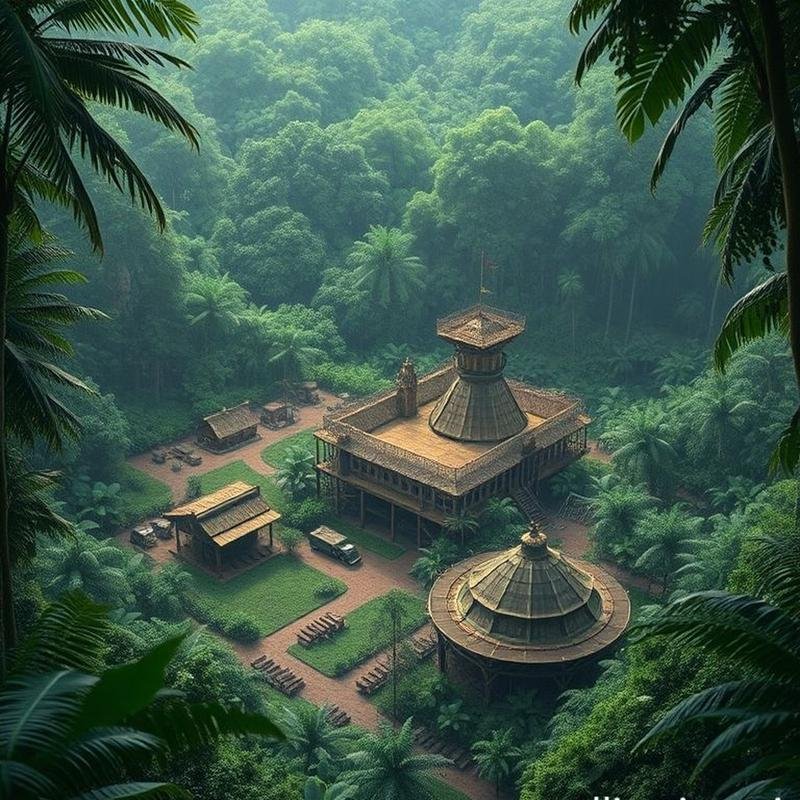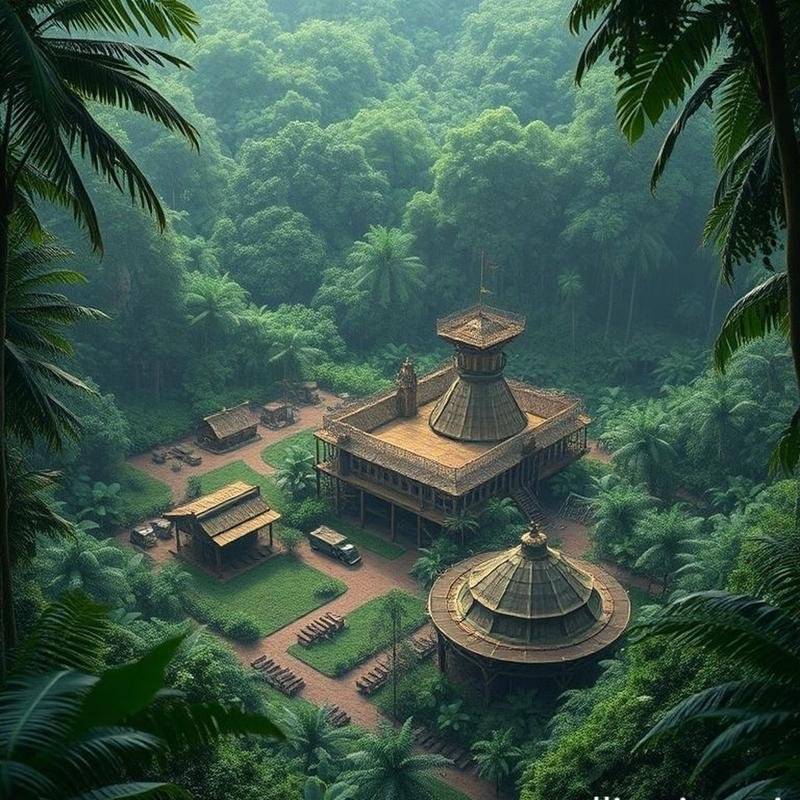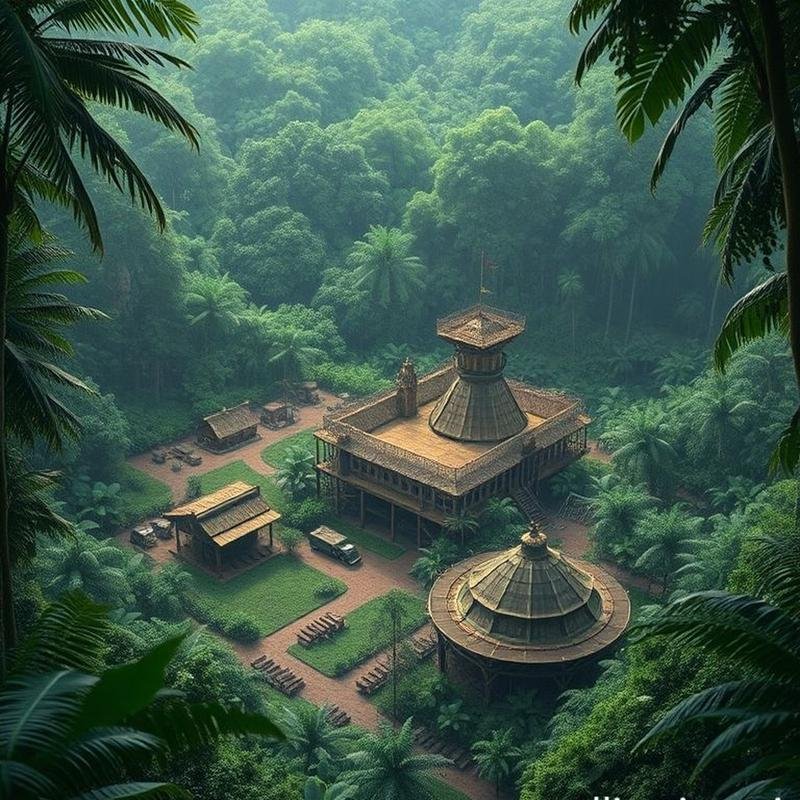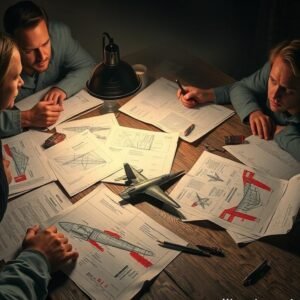Fordlândia: The Cursed American City in the Amazon 📜🌳🤯
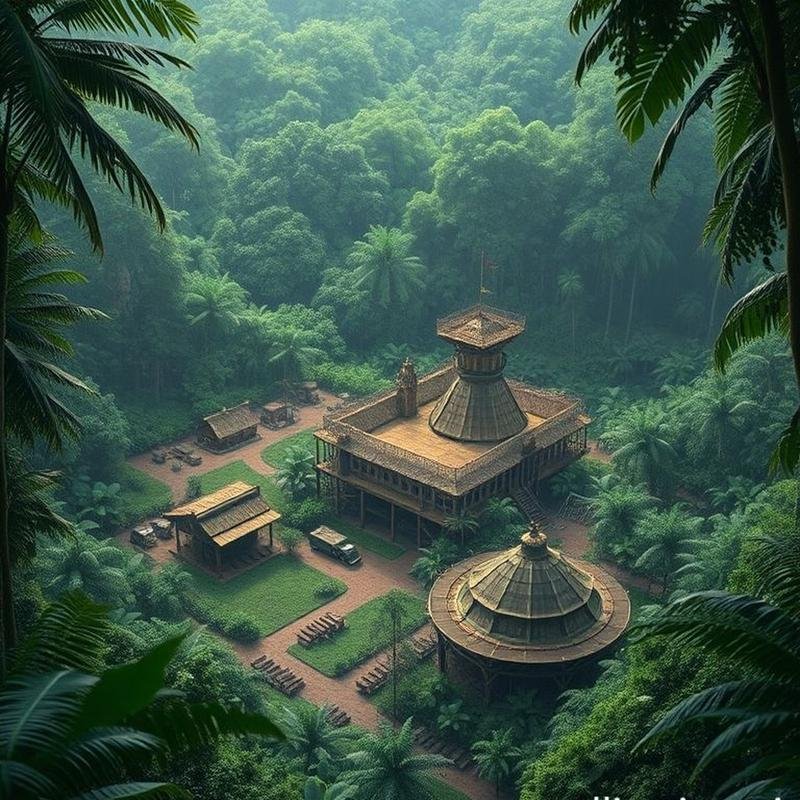
Fordlândia: The Ill-Fated American City in the Amazon
What hubris drove a millionaire to invest a vast fortune in constructing a complete American city in the heart of the Amazon rainforest? This episode explores the tragic saga of Fordlândia, a utopian dream that devolved into a harrowing nightmare, revealing how Henry Ford’s idealistic aspirations became a cautionary tale about the arrogance of human ambition and the indomitable power of nature. We will examine how Ford’s rigid industrial vision clashed with the deeply ingrained traditions and vibrant culture of the Amazonian people, and how his attempt to forcibly impose the American way of life resulted in a devastating environmental and social catastrophe, leaving behind a deserted ghost town that serves as a lasting testament to the limitations of human control. Before we embark on this compelling journey of discovery, please share your initial expectations regarding this ambitious project. And remember to like this video and subscribe to our channel for future updates.
The Rubber Imperative
In the 1920s, as automobiles gained global dominance, Henry Ford observed a growing concern. His massive corporation consumed nearly half of the world’s rubber supply, yet he lacked control over the sources of this critical resource. He felt he was paying tribute to foreign powers that controlled rubber plantations in Asia. This was not merely a financial issue; it was about achieving absolute control. Ford, a master of production, could not accept that the fate of his empire depended on the whims of others. He viewed rubber as the lifeblood of his cars, a lifeblood held captive by his competitors.
A Domain in the Amazon
In 1927, Ford took decisive action. He secured a concession for a vast tract of land in the Brazilian Amazon, encompassing 2.5 million acres of pristine rainforest. Here, in the heart of the verdant jungle, Ford would establish his own domain, an inexhaustible source of rubber solely for his needs. This was more than a business venture; it was a challenge, a declaration of economic independence, and a bold attempt to mold the wilderness according to his industrial blueprint. But could the inflexibility of industrial vision truly conquer the untamed power of the Amazon?
Clash of Worlds
In Fordlândia, two disparate worlds collided: the world of Henry Ford, with its precise schedules and rigid regulations, and the world of the Amazon, with its natural rhythms and inherent freedom. Ford attempted to impose an American diet on Brazilian workers – hamburgers and salads – as if a meal could dictate an entire culture. The workers, accustomed to rice and beans, vehemently rejected these foreign foods. Ford banned alcohol and tobacco, staples of Brazilian social life, as if deeply rooted traditions could be eradicated by a simple decree. He constructed American-style houses, believing them to be healthy, but they quickly became stifling enclosures in the Amazon’s intense heat. He implemented a work schedule that began before sunrise, in direct opposition to the more relaxed and tolerant pace of Brazilian life. His attempts to “civilize” the workers were perceived as a profound insult. The American music and dances they were forced to learn seemed like a cruel mockery of their rich cultural heritage. This was not simply a failed economic endeavor; it was a burgeoning cultural conflict.
Environmental Confrontation
However, Fordlândia was not just a logistical challenge; it was also a fierce environmental confrontation. The soil, initially promising, soon revealed its unsuitability for large-scale rubber cultivation. The crops withered, and dreams of self-sufficiency evaporated in the humid air. Then came Dothidella ulei, a devastating disease that ravaged the rubber plantations, transforming the lush green foliage into desolate, brown skeletons. This was not a temporary setback; it was a direct declaration of war from the Amazon itself, a natural rebellion. And even when some trees survived, transporting the raw rubber to the outside world remained a persistent ordeal. Vast distances, inadequate infrastructure, and small ships struggling against the treacherous, winding waterways of the Amazon all contributed to escalating costs and indefinite production delays.
The Pot-Breaking Revolution
In 1930, discontent reached a critical point. Violent riots erupted in Fordlândia, fueled by mistreatment and unbearably harsh working conditions, igniting long-simmering resentment. Property was destroyed, production ground to a halt, and the illusory American dream shattered. Ford’s substantial investments, equivalent to over $20 million at the time, were undermined by the outcry of angry workers. “Quebra Panelas,” or the “smashing of pots,” as the revolt was known, expressed a repressed rage that exploded in the face of injustice. The initial catalyst was the inadequate food, deemed unworthy of human dignity, served as sustenance for their exhausted bodies under the scorching Amazon sun. This, coupled with the strict rules, the alcohol ban, and other oppressive restrictions, fueled the already raging fire of anger. Like a surging flood, the workers stormed the company cafeteria, smashing pots and pans, and declaring their open rebellion against tyranny. They seized control of the city, forcing the terrified American managers to flee into the jungle and severing communication lines with the outside world. Fordlândia, the American city implanted in the heart of the Amazon, finally fell into the hands of those who had built it with their sweat and blood. Regaining control was a difficult task. The Ford administration appealed to the Brazilian Navy to rescue the city, which had become a fierce battleground. After brutally suppressing the revolt, Ford made some concessions: improved food, a modest hospital, and a relaxation of some of the more oppressive regulations. But were these concessions sufficient to salvage the failing project?
The Unseen Amazon
Henry Ford never visited Fordlândia, the city he conceived on theoretical maps, relying on managers who lacked any real understanding of the Amazon beyond its evocative name. He believed he could simply transplant the bustling factories of Detroit to the heart of the rainforest, oblivious to the fact that the Amazon is not merely a location on a map, but a complex living ecosystem with its own inviolable laws and ultimate authority. Rubber cultivation failed, not due to a lack of manpower, but because of a mysterious fungus, a destructive force that consumed everything in its path. This was a factor Ford had not considered, because he viewed nature as merely a raw material, not an invincible power. He attempted to forcibly impose American customs, such as heavy hamburger meals under the intense Amazon sun, and banned alcohol and tobacco in a society accustomed to celebrating life in its own way. These decisions ignited the anger of the workers, who saw Ford as a new colonizer attempting to strip them of their identity and heritage. Ford invested the equivalent of hundreds of millions of dollars today, only to reap disappointment. Fordlândia never produced commercial quantities of rubber. The supposed utopia became a graveyard of dreams and a silent testament to the arrogance of a man who mistakenly believed that money could buy anything, even untamed nature and deeply rooted culture.
A Silent Witness
Today, Fordlândia stands as a silent witness to a dream that vanished. More than $20 million—over $400 million in today’s dollars—disappeared in the heart of the Amazon jungle, leaving behind rusted structures groaning under the weight of oblivion and stories that speak of the arrogance of unchecked ambition. Henry Ford never set foot in this city, but his indelible imprint is deeply etched in its history. The Pot-Breaking Revolution, the diseases that decimated the rubber plantations, and the outright rejection of a forced American way of life were the final blows to this supposed utopia. In 1945, the project was written off, and the land was sold to the Brazilian government for a nominal sum, insignificant compared to the massive investment that was lost. But Fordlândia did not completely disappear; small communities remained, living on the fringes of this collapsed dream, preserving the story of Fordlândia in their memories to pass on to future generations as a lasting warning. The abandoned power plant, the towering, rusted water tower, and the hospital that only healed sick dreams are all dilapidated structures, silently consumed by the roots of parasitic trees. Here, victorious nature is rewriting history, slowly and steadily erasing chapters of industrial arrogance. Among the branches of trees intertwined like arms lie the silent witnesses of the rubber factory machines. Abandoned tractors and scattered, rusted machinery, remnants of unbridled ambition, have become absurd works of art, silently narrating a tale of resounding failure. In 2013, the Brazilian government attempted to restore the perforated memory and declared Fordlândia a national historical site. Restoration? Or an admission of bitter defeat? A stark symbol of the failure of foreign intervention in the eternal realm of the Amazon.
Lessons from the Jungle
Fordlândia was not just an economic or logistical failure; it was a clash of cultures and a cautionary tale about imposing one’s ideals on a complex and self-contained world, highlighting the hubris of American industry. Agricultural engineers disregarded the wisdom of local residents, leading to the spread of pests and diseases, and they forcibly imposed an alien American diet. The Pot-Breaking Revolution was a resounding cry of rejection and conclusive proof that food is not merely fuel for the body, but an identity rooted in the soul. Ford’s vision from afar, completely detached from the lived reality, was destined for utter failure. Fordlândia taught us an unforgettable lesson: that globalization is not a blatant cultural invasion, but a mutually beneficial exchange of civilizations, and that sustainable development begins with respecting and valuing the environment, not with its systematic destruction.
Now that you have heard the story of Fordlândia, what lessons have you learned from this bitter experience? Do you believe similar projects could succeed in the future if implemented with greater sensitivity to local culture and the environment? Please share your thoughts in the comments, and let’s discuss how we can avoid repeating the mistakes of the past.
